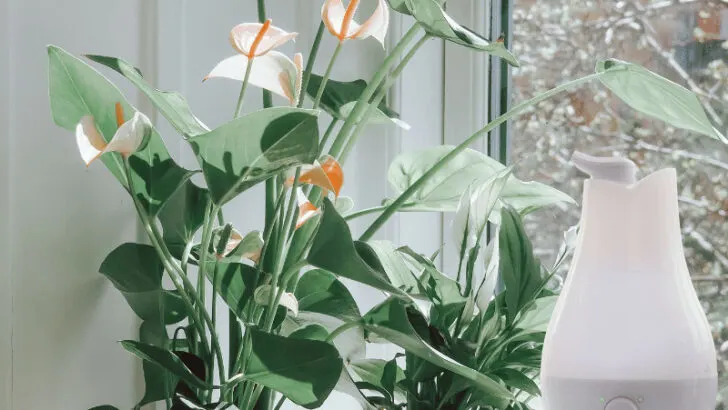Anthuriums are humidity-loving plants. I keep all my Anthurium plants in a grow tent with high humidity. Learn about the ideal levels for these houseplants in this article.
Table of Contents
Anthurium humidity
The ideal air humidity for Anthuriums is between 70-80%. They will grow at lower humidity levels but ensure the humidity is at least 50%. Anything below 50% will lead to slow growth and brown and crispy leaves. To increase the humidity indoors, use a humidifier or a pebble tray filled with water. You can also put plants close together.
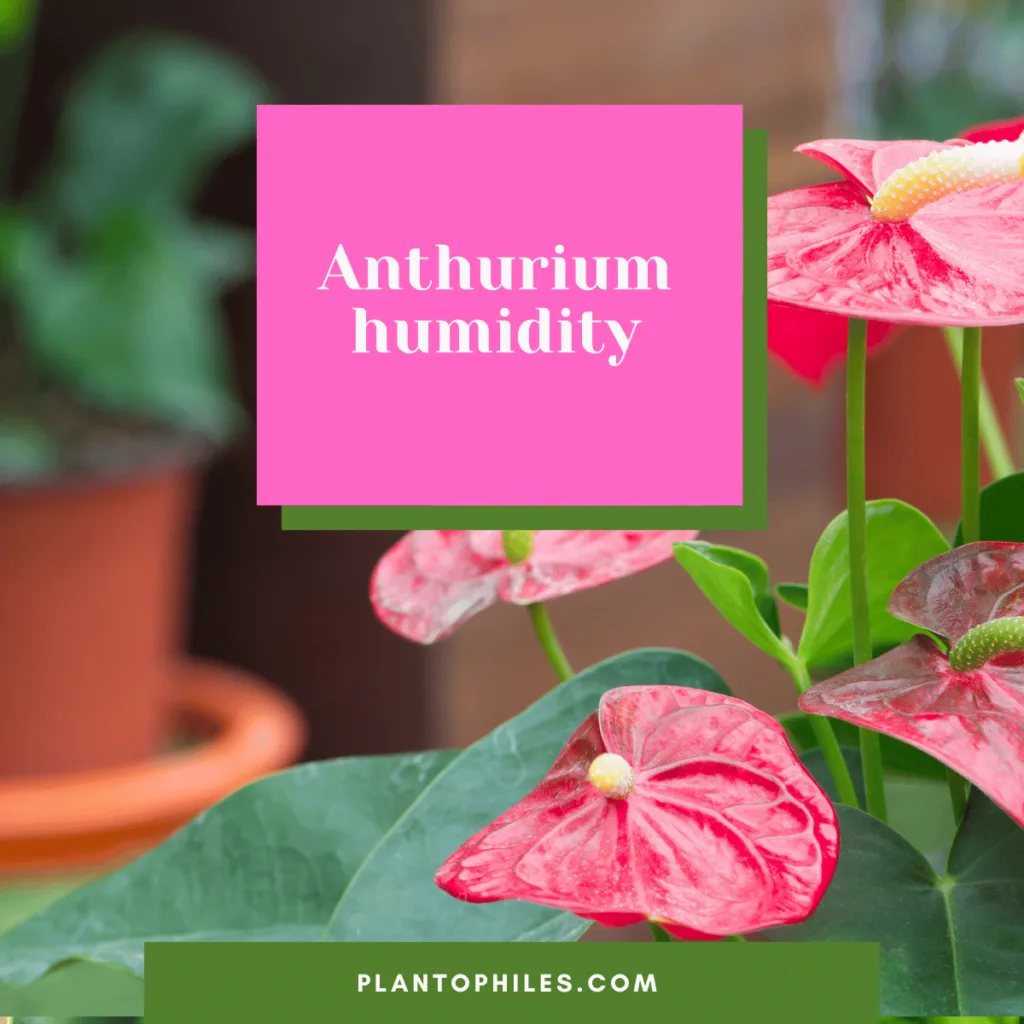
Read more about Painter’s palette care in my extensive guide.
The Native Growing Conditions of Anthurium plants
Anthuriums are native to Central and South America, according to Missouri Botanical Garden. It is an epiphyte growing on other plants and objects. It belongs to the tropical family Araceae or Aroid plants. It prefers tropical to near tropical climates. The Anthurium andraeanum originates in Central America.
The University of Hawaii states that these plants grow in the shade in nature. The understory of tropical forests is their habitat. This equates to bright indirect light at home.
Anthurium andraeanum grows in wet forests in the Andes between 1200-3900 ft (365-1189m), states Atkatsuka.
They need warm temperatures between 77-92°F (25-32°C), moist conditions, and high humidity levels.
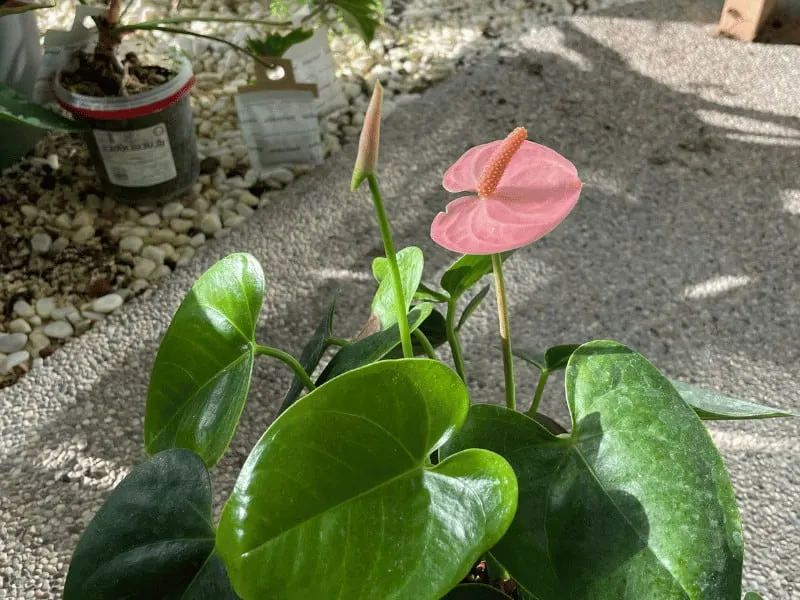
Ways to increase the Humidity in Your Home
The best ways to increase the humidity for houseplants are:
- A humidifier
- Grouping plants closely together
- A pebble tray filled with water underneath the planter
- Use a terrarium or enclosed container
Raising The Humidity Indoors With A Humidifier
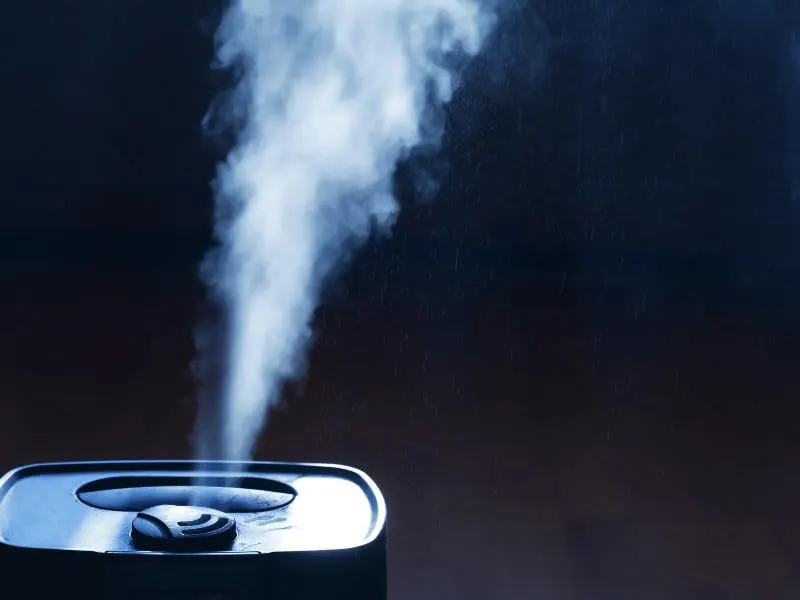
A great way is to use a humidifier. A humidifier can increase the humidity by 10-20% for a prolonged period. I have tested this in my home.
The bigger the room is, the more difficult it is to get an increase. I, therefore, use a grow tent as well as multiple terrariums and plastic containers. These enclosed habitats are easier to be controlled.
Humidifiers have to be refilled with water. I do this weekly. It depends on the settings you use. I aim for 80 percent humidity in the grow tent. In a room, this level is unrealistic. Aim for 50-60% instead.
Humidity Trays
I am not a big fan of this method. But it works better than misting your plants. Get a plastic saucer. A terracotta saucer only works if it is glazed. Put some stones in it. Fill it with water. Then add the pot on top. Refill the water as needed.
Should You Mist Your Anthuriums
You should not mist your Anthurium. Bacteria and fungi swim across foliage when it stays wet. Misting plants increases this risk. When using a hygrometer, you will see that the air humidity is not raised that way.
It works only for small containers. But there you have the problem of insufficient airflow. Also, never mist in the evening. Colder temperatures will prevent air evaporation.
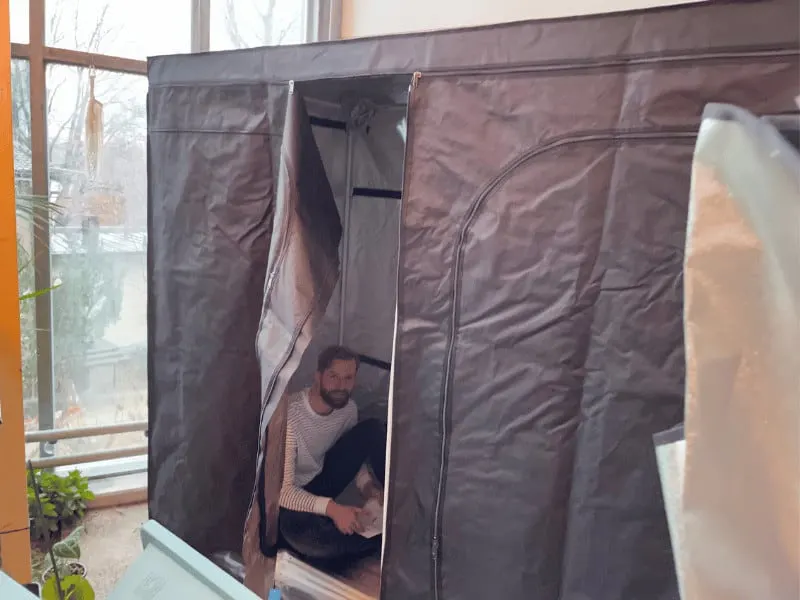
Anthurium Plant Care Over Winter
When caring for Anthurium indoors, adjust the care over winter. The ideal humidity in winter is 50-60%. It is lower because temperatures will be lower.
Also, your plants will grow slower. Keep the plants away from radiators as they radiate hot and dry air. In addition, keep the plants away from drafty windows. Temperatures will be much lower, very close to a window.
11 Signs Your Flamingo Flower Needs More Humidity & How to Fix It
The Painter’s palette plant will signal through its foliage and blooms when the humidity around it is too low. Here are the most common sign based on my personal experience growing these indoor plants for years:
These are the signs your Anthurium needs increased humidity:
1. Stunted growth
Anthurium care requires high temperature and humidity levels. When the humidity around your Anthurium gets too low, it will grow slower.
Solution:
Put a pebble tray under the pot. Fill it with water, and it will increase the ambient humidity.
2. Dry, Crispy Leaves
Crispy or curly leave are signs of insufficient water levels, both in the air and in the potting mix. 80 percent humidity is ideal for great-looking foliage. Warm temperatures and dry conditions are detrimental. The evaporation from the leaves to the atmosphere is too high, and your plant starts to dry out.
Solution:
Provide good humidity using a humidifier close to your plants. In addition, choose a chunky potting mix that can hold some moisture. Well-draining is essential. A blend of peat moss, perlite, orchid bark, and charcoal, as well as some potting soil, works excellently.
3. Wilting Leaves
Wilting leaves are a sign that the humidity levels in your home are low. Your plant is deprived of hydration. A different reason could be too much water caused by soggy soil. This will lead to root rot.
Solution:
Before drawing any conclusions, check the soil. If it is soggy, the cause might be overwatering or root rot. If that is not the issue, test the humidity with a hygrometer. This will let you know the amount of water vapor in the air. If it is too low, put your plant close to other plants. Use a humidifier or pebble tray.
4. Brown Edges on Leaves
Anthuriums are tropical plants. The Anthurium genus prefers high humidity, and browning leaf edges are a sign. Adhere to a proper watering schedule. Plants need constant access to moisture. Water will evaporate over time. Give your plants water every seven days. It can also be every few days if you live in a hot and dry climate.
Solution:
Misting the leaves frequently is not the solution. Plant enthusiasts are promoting this technique. I can guarantee you, based on my tests, that it doesn’t work. It can lead to fungal and bacterial diseases. Use pebbles and water under the pot for Anthuriums indoors.
5. Brown or yellow leaves
Brown and yellow leaves can be a sign of underwatering and overwatering. It can also indicate that the humidity is too high or too low. The ideal is a humidity between 60-80 percent.
Solution:
If these color changes occur, it is important to go through the Anthurium care guidelines. It can be infrequent watering or a lot of moisture. Especially in the growing season, you need to water more. Hold back in winter. The same is true for the humidity.
6. Leaves curling
Anthuriums such as Anthurium clarinervium are not drought tolerant. They need slightly humid soil at all times, as well as water vapor in the air. Curling leaves can be an indication that conditions are too try.
Solution:
Keep your Anthurium in humid conditions. This holds true for the air and the soil. A moist environment is essential. You should try to mimic the conditions on the slopes of the Andes, where it is hot and humid. You can also try less light. This way, the relative humidity can be lower.
7. Drooping leaves
Plants shouldn’t droop. This indicates your care needs to be adjusted.
Solution:
Ensure humidity is in the 60 to 80 percent range. Ensure that you use well-draining soil and let the soil almost dry between waterings. Avoid direct sunlight.
8. Pests
Pests often attack when your plant is weak. it becomes weak when it doesn’t get what it needs. Anthurium plants prefer tropical conditions. Your heart-shaped friends become vulnerable due to small errors in your care. In addition, some pests prefer dry conditions.
Solution:
Ample humidity at least above 50 percent and a temperature between 77-92°F (25-32°C). Once pests are present, use a spraying bottle with insecticidal soap weekly.
9. Flower buds falling off
The Anthurium flower consists of a spathe and spadix. When flower buds die off unexpectedly, something is wrong.
Solution:
Look at the leaves as well as at other buds. If they look ok, the plant may have decided to abort the bloom to save energy. If all other conditions are met, take measures to increase the water vapor concentration in the air.
10. Blooms failing to open / Inflorescences wilting
Blooms and leaves that are failing to open are often an indication of insufficiently humid air. I often observe this on many of my plants. Leaves and blooms can get stuck.
Solution:
Here the solution for once is spraying. Use a water sprayer and spray the plant. You can also help the plant manually, but chances are you do more harm than good.
11. Fewer blooms
The healthier and happier a plant is, the better it will bloom. Blooming signifies that you are doing most things right with your plant care. It can also mean that some things are not on point.
Solution:
Study the plant’s needs, from soil, watering, and temperature to humidity. Identify things that can be improved.

Daniel has been a plant enthusiast for over 20 years. He owns hundreds of houseplants and prepares for the chili growing seasons yearly with great anticipation. His favorite plants are plant species in the Araceae family, such as Monstera, Philodendron, and Anthurium. He also loves gardening and is growing hot peppers, tomatoes, and many more vegetables.

